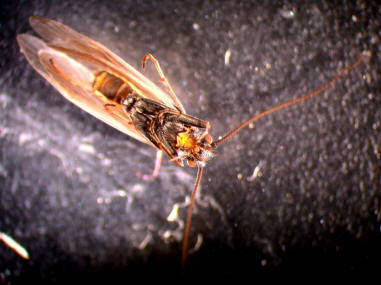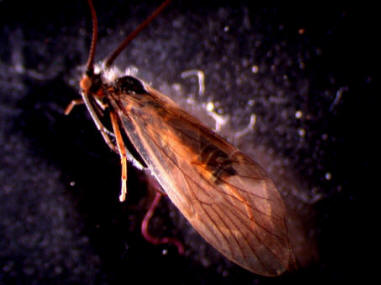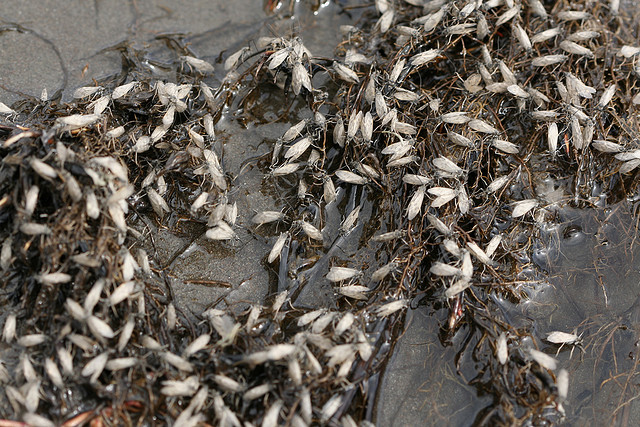Reproduction
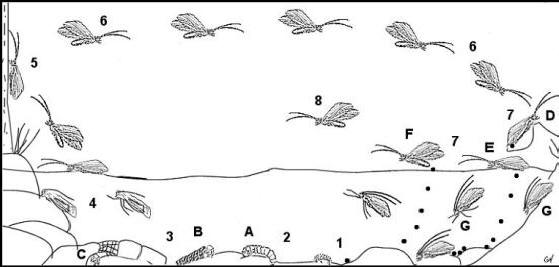
Photo thanks to Upper Delaware River Insects
Caddisfly life cycle includes 5 larva instars and
one generation a year. They undergo periods of non-developmental growth
in damp substrate during summer, when their habitat has dried up (McCafferty
1981).
When leaf detritus is at a minimum they resume development as a response
to shorten day length in the late summer or fall, larval dormancy may be
to ensure synchronized adult emergence (McCafferty 1981).
Pupation is almost always aquatic, transformation to the last larval
instars to pupal stage happens in a sealed cocoon called the pupal case.
The pupal case usually is some modification of the larval retreat (as
described in a poem by Edna St. Vincent Millay in
facts).
Pupal cases are generally attached to a fixed
object. A larva will spend about 3 weeks in the pupal case for it to
develop into an adult. At this time it will cut itself free and the
adult will emerge and crawl out of water or swim to surface of the
water (McCafferty 1981).
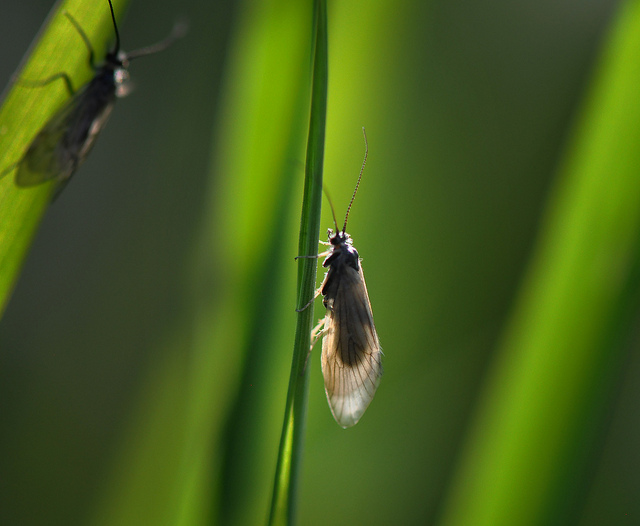 Photo
by Scott Butner
Photo
by Scott Butner
During this time the Caddisfly is at its most
vulnerable for fish predation. Adults generally fly way pretty quickly
after they emerge from pupal case. They generally live to 1 or 2 months.
They are mostly nocturnal or crepuscular but many are diurnal. Mating
generally takes place on the ground or on vegetation. It often starts
with a swarming activity. The best time to mate is during wetter
seasonal periods.
Females often lay masses of eggs in water by either dipping their
abdomen in the water, diving in the water, or crawling into water.
Dew, fog, or rain liquefies the gelatinous material
within which the eggs are laid allowing eggs or newly hatched larvae to
drop or migrate into the water. The eggs of some species can remain
dormant in dry periods. They then hatch and become larva and the cycle
starts over.
Photo by Joshua Bergan
(All Facts from McCafferty 1981)
